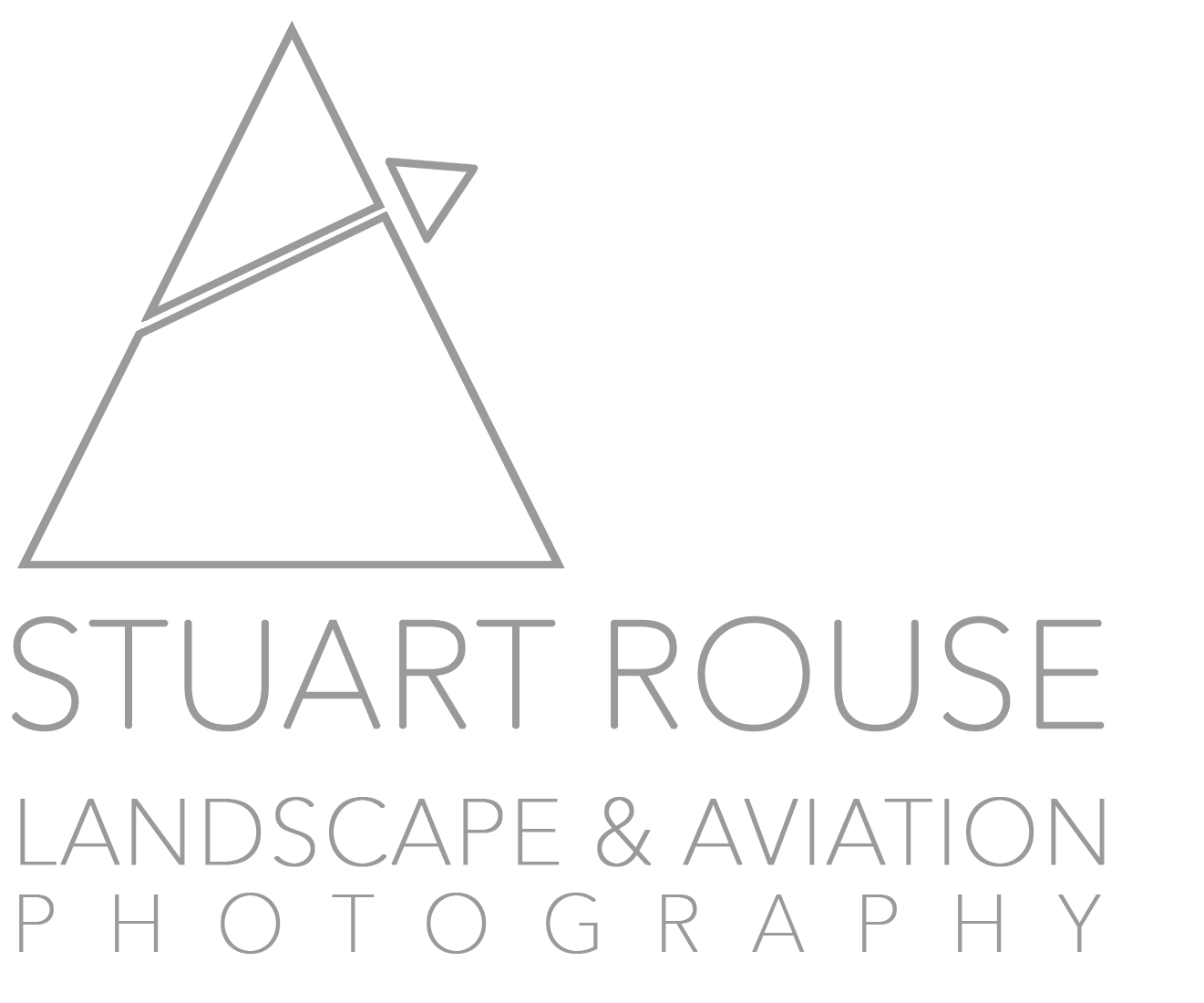Late Summer Evening at bulwick
17th September 2020
There’s a village called Bulwick, not too far from where I live. I’ve had a keen eye on it for sometime now, but the opportunity to make a landscape image of it has never come to fruition. I had originally found the village with a Milky Way or star trail image in mind, but this evening’s conditions made for an attractive late summer evening image instead.
The field I really needed to get into was inviting, the farmer's gate open and welcoming, with hay bales strew across the field. The sky was blue with a little cloud interest and the undulating land ahead of my position leads the eye towards the church with a hint of the village buildings beyond. Unfortunately, cloud on the horizon prevented the sun from lighting up the sky with orange and magenta hues, but the thin stratocumulus provided sufficient interest in the top third of the image. I love the complementary colour pairs of the orangey yellow and blue in this image. It was taken with my EOS R and EF 24-105mm L lens set at a focal length of 32mm in a 16:9 ratio format with a 2-stop soft ND grad filter.
USAF Deployment to the UK 2020
15th September 2020
My previous blog post about the Aviano F-16s visiting RAF Lakenheath is not the full story! A major military exercise during this month sees not only the F-16s visiting the UK but also a detachment of 10 USMC F-35Bs deployed to RAF Marham and a detachment of 6 USAF B-52H bombers deployed to RAF Fairford. A U-2S spy plane has also been stationed at Fairford on long-term deployment for sometime too, possibly since January 2020.
I had only visited RAF Marham twice before - the first time in my early twenties I was lucky enough to go on-base and sit in the Navigator’s seat of an in-service Tornado GR3, parked up in a HAS. The second time, just last year, a brief visit to catch a glimpse of the RAF’s recently arrived F-35Bs, to no avail. The 10 USMC’s F-35s arrived just last week from the States and were due to be joining the RAF’s jets on board our new carrier following some time stationed on the base. Daily exercises were reported and tracked on radar so a visit to photograph these new jets was a must. Runway 24 was in use and a position chosen away from the extended runway centreline determined to provide the most photogenic spot. A number of USMC and RAF jets were flown on the day and captured on camera, both in conventional and VTOL modes.
The B-52s have been deployed fairly regularly to Fairford on exercise over the past few years, for a few weeks each summer, but I have never had the opportunity to go and visit to photograph them. I’ve been wanting to do this for quite sometime, especially as they are not stationed in or a common sight in the UK. 2020 was to be the year! An early start found me on the airfield perimeter by 0730 awaiting some movement - the NOTAM had been released stating the live airfield between 0700 and 2200 so it was looking promising, and what a lovely day for it too. Hot and sunny! Plenty of other observers and photographers were around, inspiring some confidence in my decision to make a long drive down and such an early start. Runway 27 was in use, albeit with still conditions. Eventually USAF U-2S 68-337, callsign ‘Black 01’ was rolled out and taxied for the runway, complete with a supporting Dodge Charger chase car to collect the outrigger wheels following lift off into a spritely steep climb. B-52 engine noise could be heard emanating from the far side of the airfield following the subsiding jet noise of the departing U2. Shortly after, 3 bombers - callsigns Kago 011 and 013 were seen to be taxiing out to the active runway, with 60-005 leading 61-034 and 60-007. The bombers departed in quick succession, with the preceding aircraft barely leaving the runway before the subsequent aircraft applied full thrust, blowing an impressive and iconic dark, sooty exhaust cloud out behind it. As they climbed away leaving, each leaving their exhaust trails painting the sky with dark traces of their flight paths, I took a moment to reflect on such an impressive sight, and one could only imagine what a Cold War nuclear strike may have looked like with hundreds of these aircraft launching in quick succession just as these three had done. I then explored the other side of the airfield where the remaining three bombers were positioned and photographed them at fairly close quarters through the perimeter chainlink fences. Knowling the bombers would be gone for hours, I then took the opportunity to visit RAF Brize Norton for the first time and photographed a couple of RAF KC2 Voyagers arriving before returning to Fairford to await the arrival of the Buffs. Positioned back at where I had started, the B52s popped up on radar south of Berlin at 1550. I tracked their routing back, and as per the previous few missions the routing retuned to the UK via the North Sea, East Anglia and overhead Northampton before descending through the Daventry corridor into Fairford. Whilst the aircraft were overhead Ely, a Tower radio broadcast stated that Runway 09 was active. I suddenly found my self in the wrong position to photograph the aircraft in the air on the approach. I figured I had time to reposition so without delay, a spritely car journey over to the opposite unfamiliar side of the airfield took me to a padlocked field gate. The aircraft were now at 3000ft downwind. However, shooting the aircraft on approach meant shooting straight into the afternoon sun - and I didn’t want silhouettes. So I walked as far south of the approach as I could, accepting the restrictions of the road side hedges and trees obscuring my view. But this meant I could capture the aircraft with more sidelight that backlight - much better! Such a big aircraft at fairly close quarters meant that I deploy my 70-200 f/2.8 lens, a far sharper lens than my 150-600. And what another fantastic sight I was lucky enough to see - 3 B-52H’s going downwind left on a visual circuit into land, with the first (Kago 013, 60-007) executing a missed approach into 3 circuits whilst the other 2 jets landed. Once all 3 bombers were on the ground, Black 01 - the U2 - called on the radio and joined the pattern to land.
All-in-all, a couple of amazing days, some incredible sights of aircraft on exercise which I have only seen on static at airshows up until now. Very happy with the photographs too, especially the close ups of the B-52s taken with the super sharp 70-200.

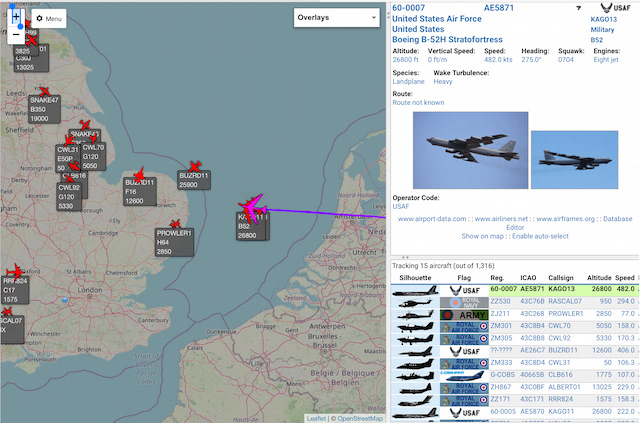
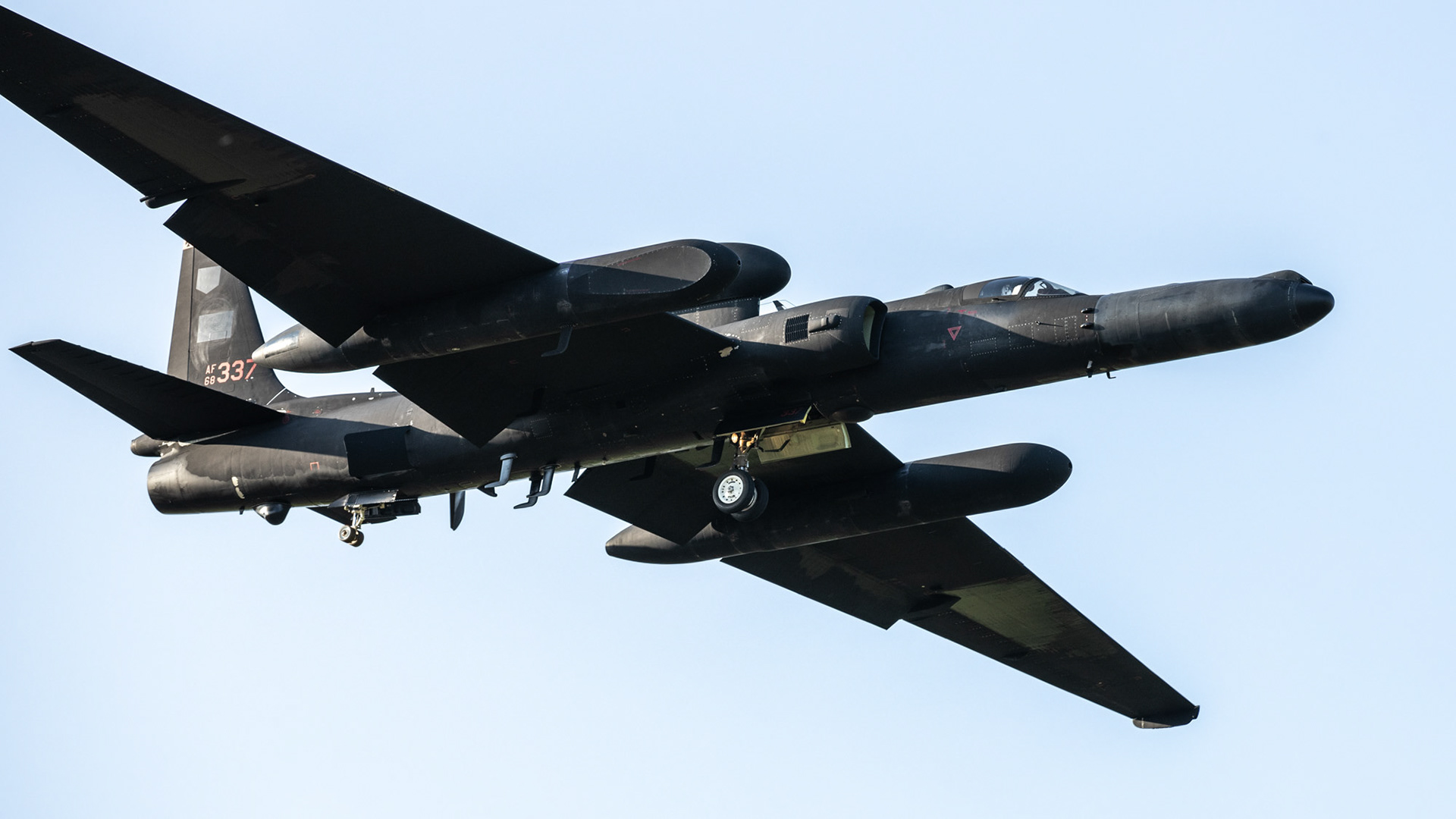
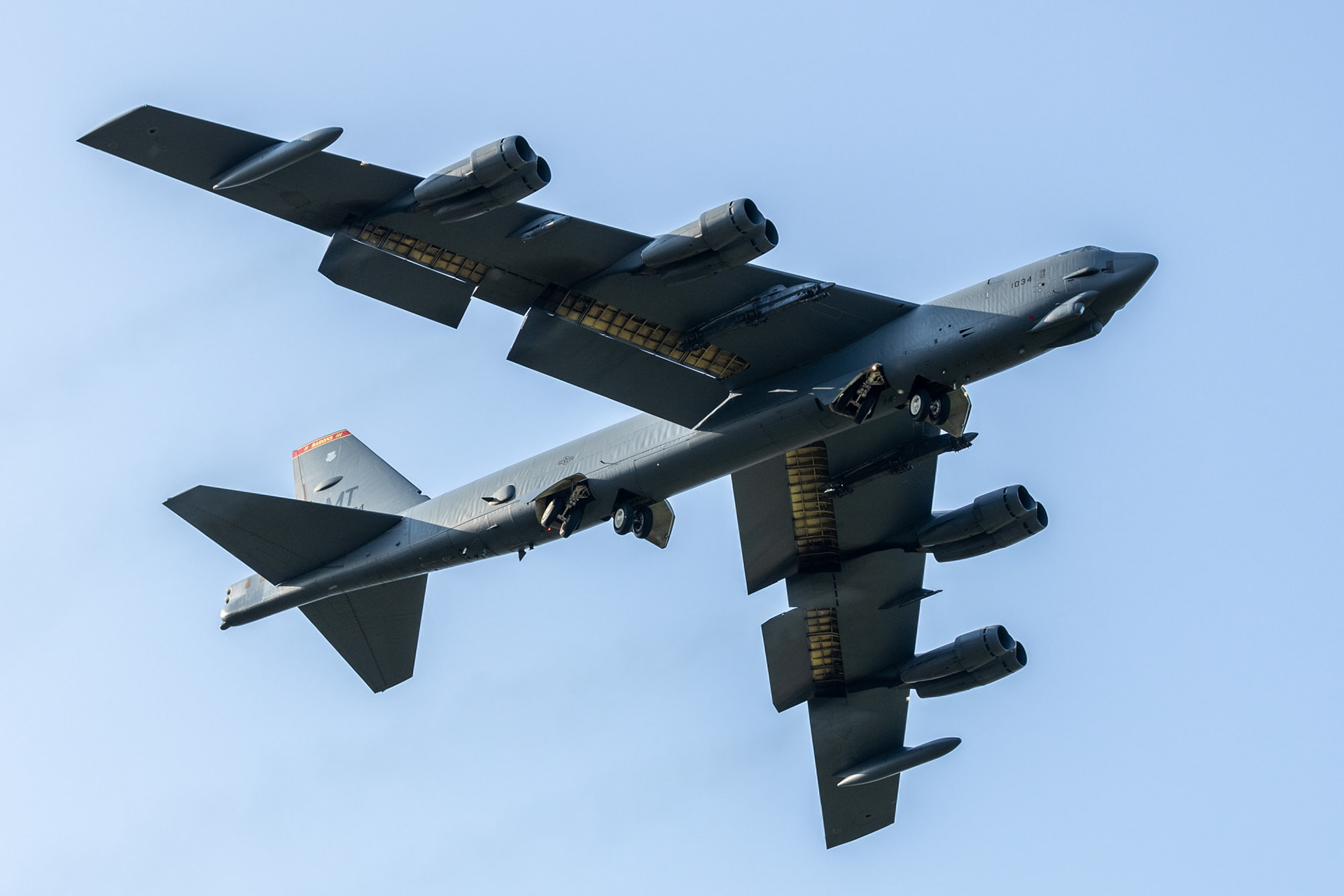
USAF F-16s visit lakenheath from aviano afb
28th August 2020
A wet, damp, miserable day is always a challenge for photography, but even more so for fighter jet photography. The lower light levels of the dull great skies dramatically affect the quality of the photographs, and misty conditions reduces the contrasts levels substantially. The day in question - Friday 28th August - 16 F16 fighter jets from 31st Fighter Wing stationed at Aviano Air Base in northern Italy were due to arrive on a month-long detachment to RAF Lakenheath. F16s stationed in the UK is a rare event so a trip to Lakenheath was on the cards. The airfield was the busiest I had ever seen it with spectators. At 9am a record number (for me, anyway) of F15s got airborne - perhaps more than 18. The scheduled arrival times for the F16s was unknown but the first brace of 4 arrived among the F15 departing traffic shortly after 0930.
The F16s arrived in 4 groups of 4, some of which were fully laden with external fuel tanks and other external payload and weaponry. The final 8 - callsigns Buzzard and Banshee were located on the radar around Rotterdam and tracked over the north see to final approach using 360Radar. Approach control directed them over the radio towards the runway and into the viewfinder of my EOS7DMkII. The jets were from the 510th Fighter Squadron “Buzzards” and the 555th Fighter Squadron “Triple Nickel”.
The visiting jets’ serial numbers are: “AV” AF 87-350, 87-355, 88-491, 88-521, 88-525, 88-532, 88-541, 89-001, 89-008, 89-023, 89-026, 89-038, 89-044, 89-057, 89-178, 90-709.
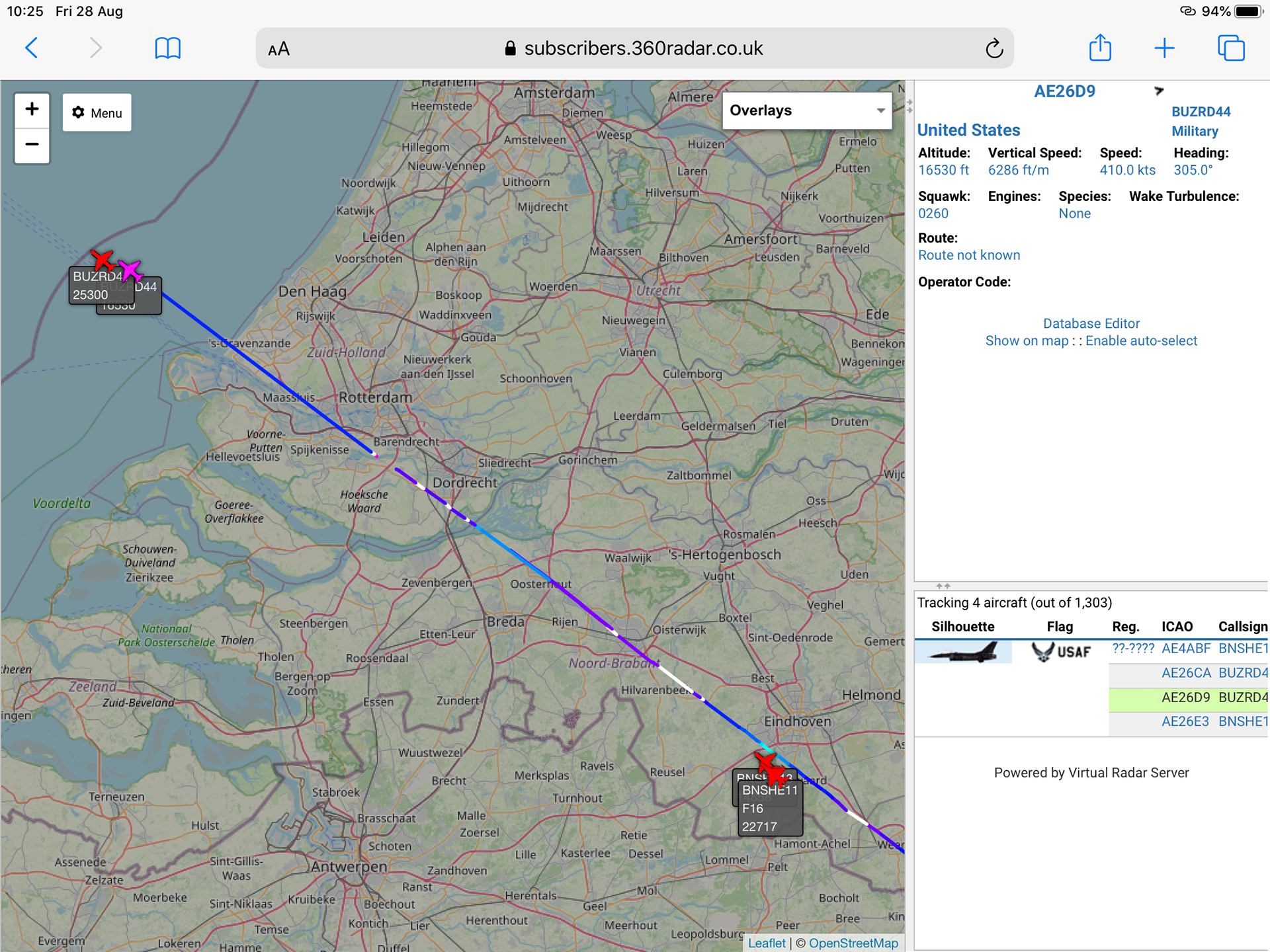
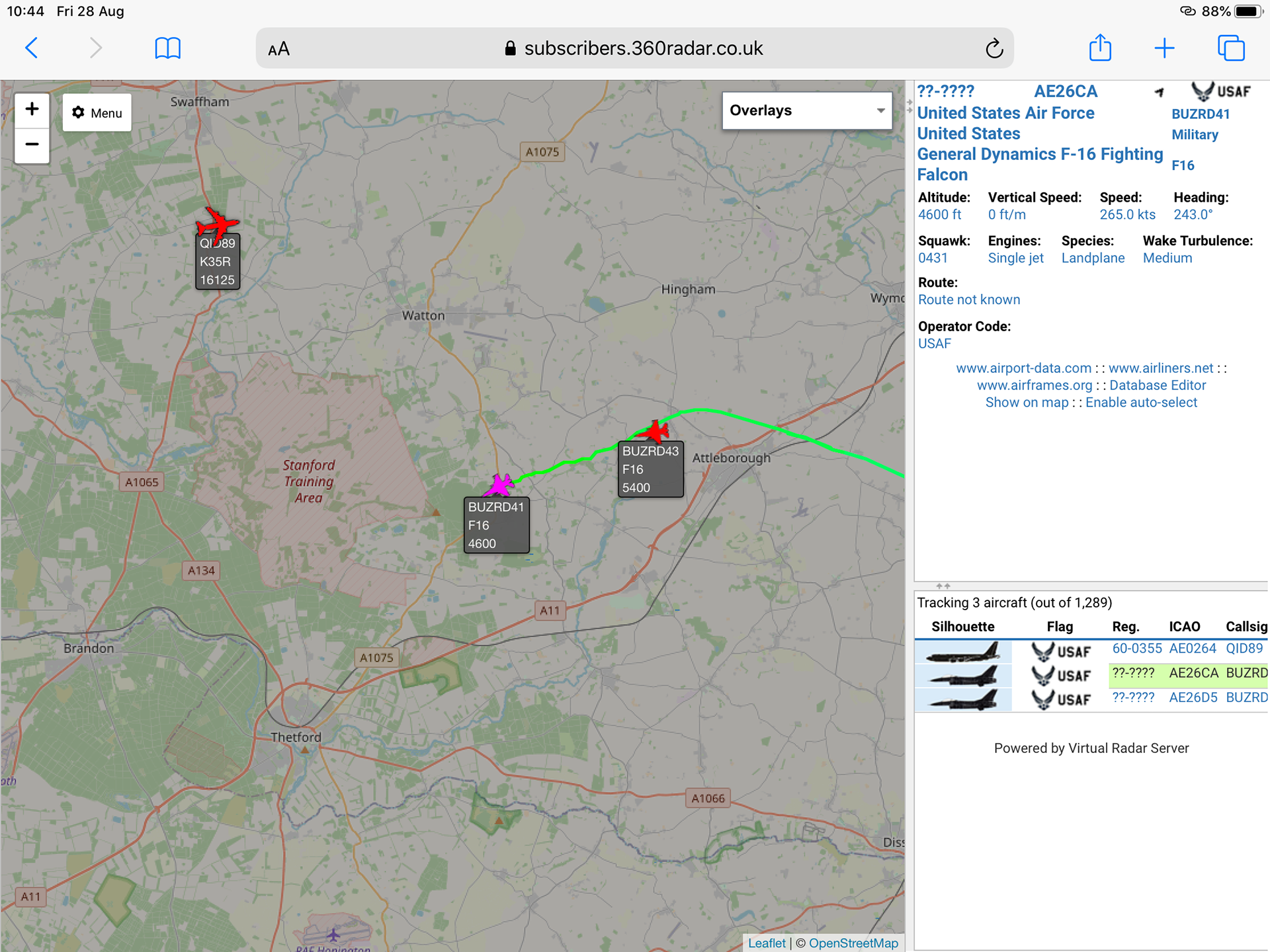


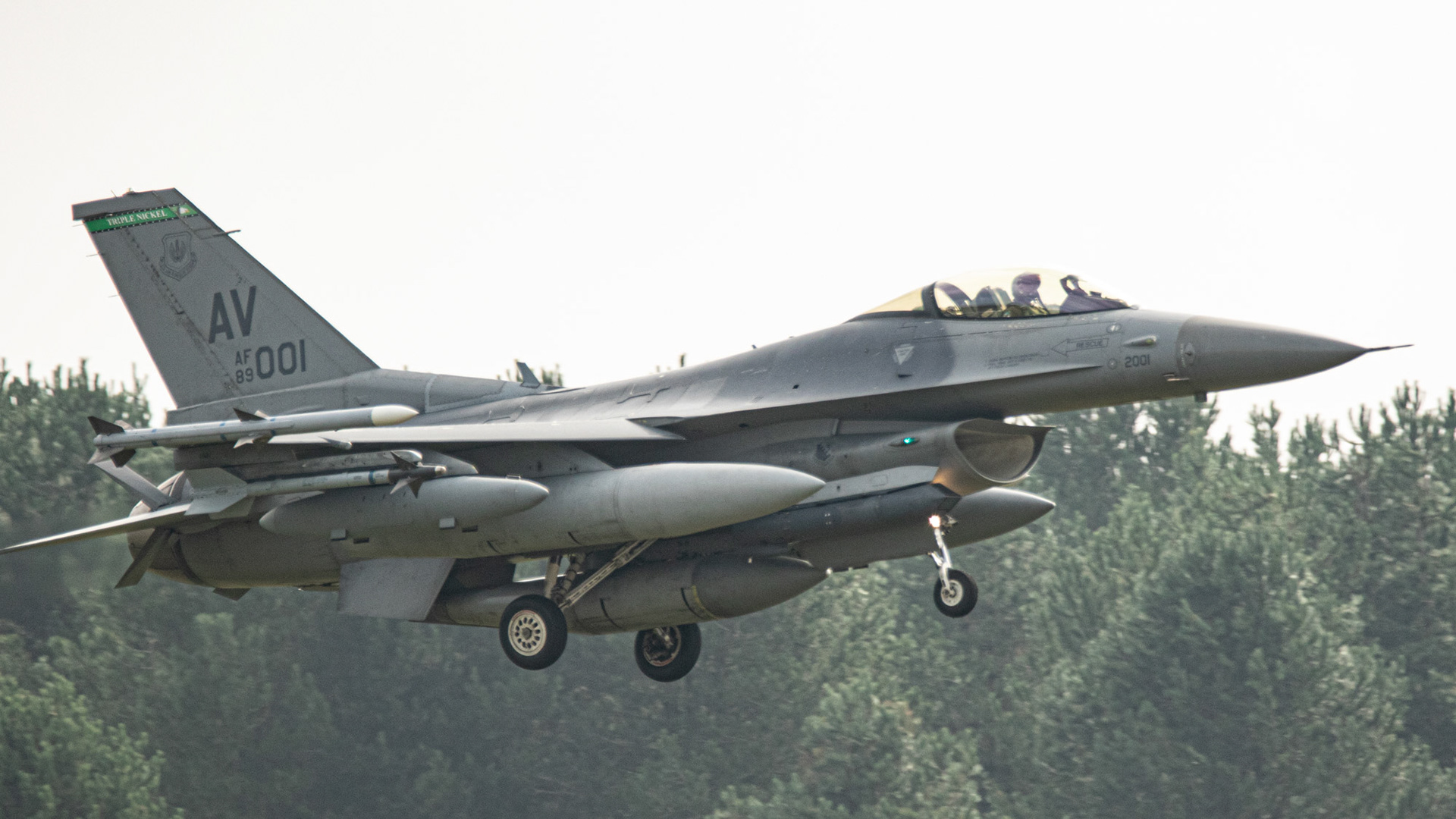

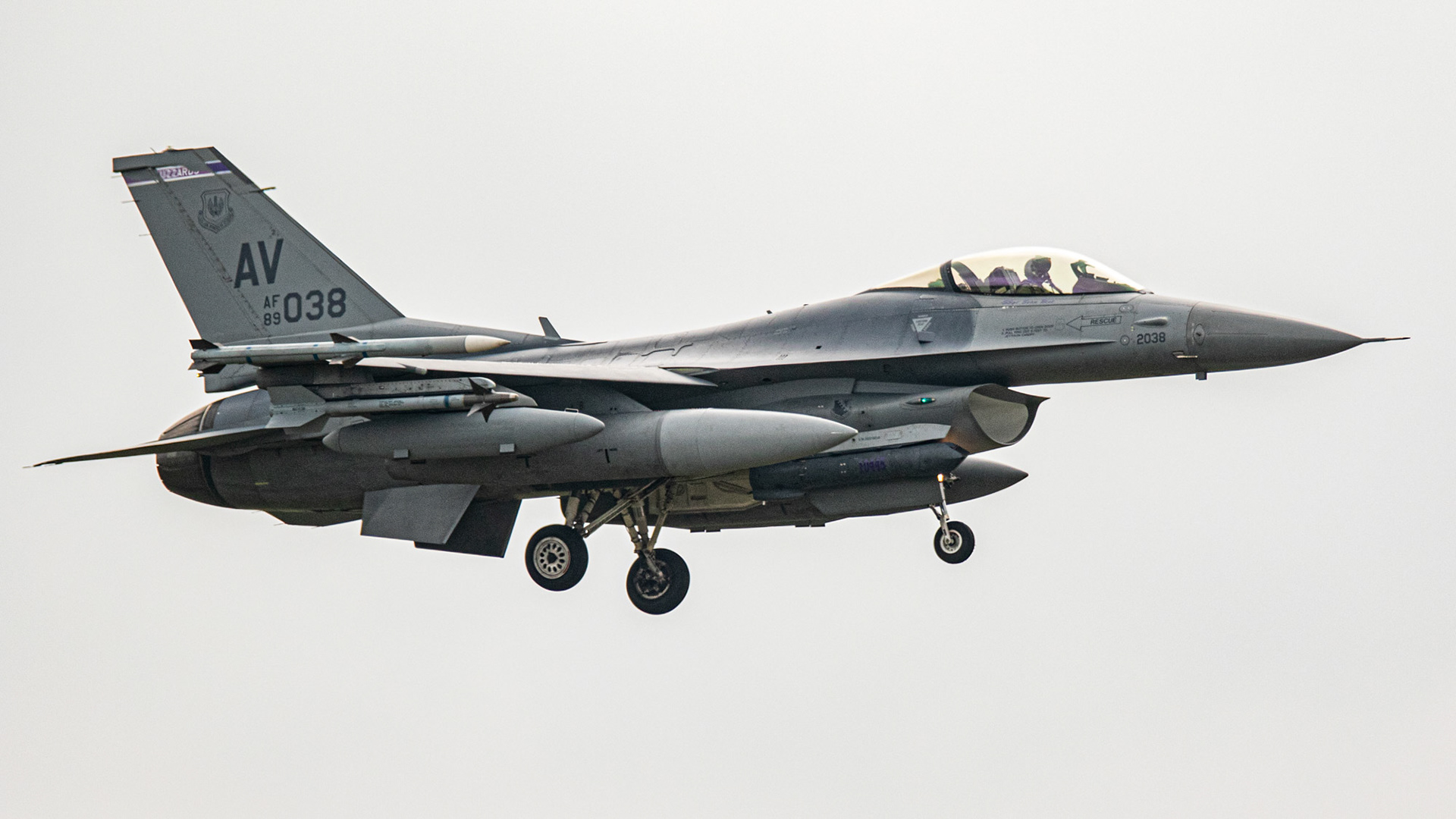

A Welcome return to RAF Lakenheath
20th August 2020
Today marked my first time back to Lakenheath since January (due to the lockdown) and it was good to be back, especially on such a lovely sunny day with blue skies. It’s usually busy with lots of spectators but was even more so today. The viewing area and the road leading up to it was packed but I stuck to my usual spot just on the corner of the forest on the A1065 adjacent to the threshold of Runway 24. Today was not an exception - Runway 24 was in use for take off and landings. Personally, I favour this spot for photography because regardless of the season, the sun is generally behind - indeed, photography from the viewing area over the other side of the runway can present silhouette problems because of the angle of light. And today, with almost clear skies and strong August sun I needed to avoid shooting into it and rather using it to light up the aircraft on approach.
For the resident 48th Fighter Wing, comprising of F15C/Ds from the 493rd Fighter Squadron and F15E Strike Eagles from the 492nd and 494th Squadrons, it was a busy morning! A total of 14 aircraft departed and returned at various intervals, some returning to land and some opting to run through a few circuits before retuning back to base. An unusual sight at Lakenheath - more commonly found just down the road at Mildenhall - was a couple of KC-135 tankers landing and remaining on base for the remainder of the day. On this occasion, all flying was completed before lunchtime leaving a very quiet afternoon.
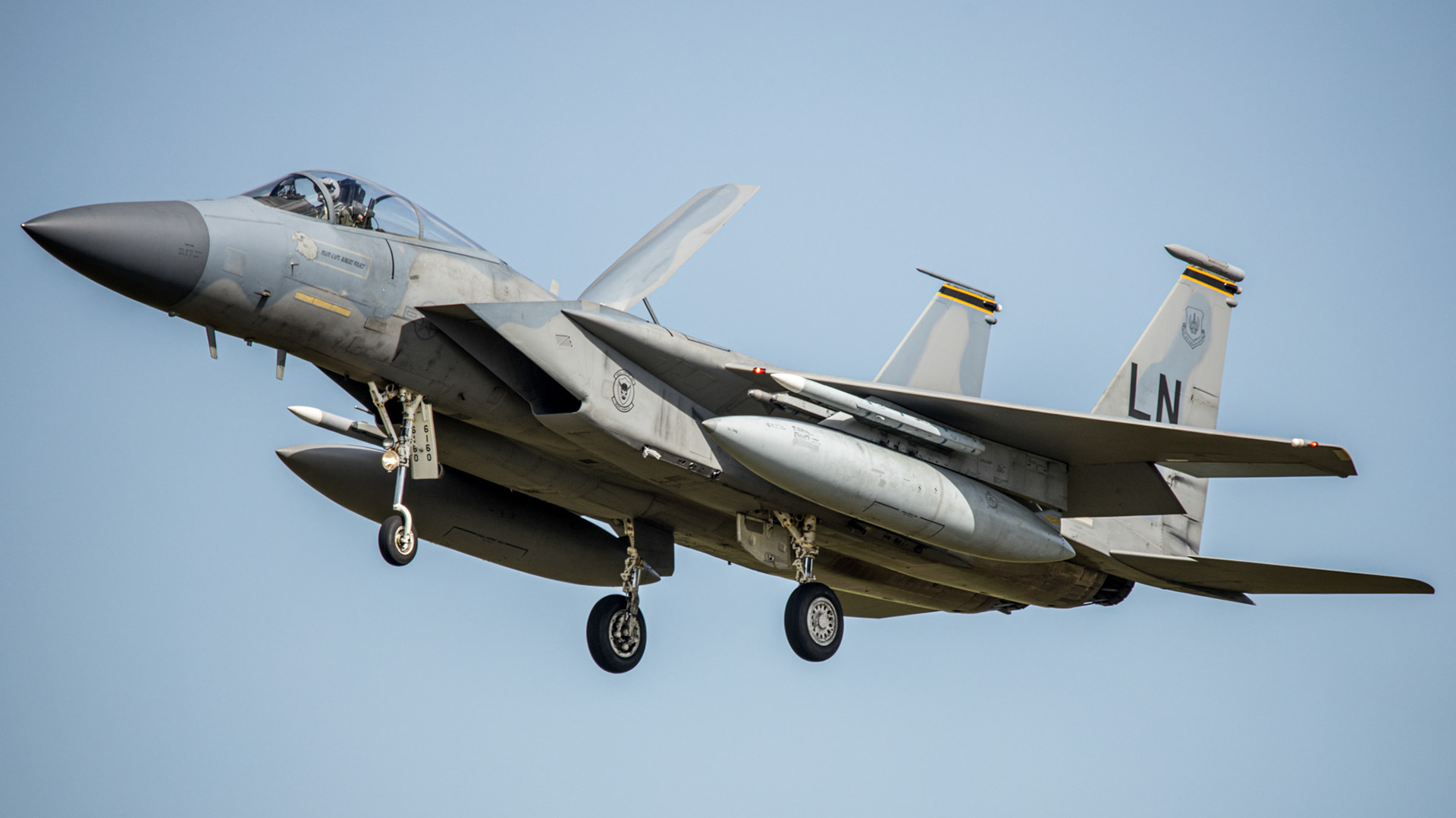



SUNFLOWERS
6th August 2020
I’m always on the lookout for interesting scenes to photograph. It’s part of the territory of being a landscape photographer. Fields of beautiful red poppies during high summer are the most sought after splashes of colour, they are few and far between and you need to know where to find them. That’s where social media comes in useful, chat and tip offs between like-minded people can point you in the right direction.
And that’s exactly what happened a few days ago, except this location had sunflowers. First, I had to find the precise location so I immediately went off on a daytime scouting trip to find the field of golden yellow. Jackpot - I’d never seen anything quite like this field before and making some images of this incredible field of sunflowers just outside Desborough became my top priority.
I returned for sunset on three successive evenings, the first producing adequately satisfying results and the second slightly less so, the main problem being a bank of cloud lining the horizon thereby preventing the setting sun from lighting up the sky in my composition.
Third time lucky. The sky was looking fabulous, the clouds just at the right height and density. The sun did indeed light up the sky as I always hope but it was just before sunset that provided me with my favourite image - a combination of a low setting sun with just enough height to backlight the sunflowers before me. I continued to shoot further and made an HDR Panorama of 25 images.


REVISITING A HOME PATCH FAVOURITE
22nd July 2020
The sky looked promising. Certainly more promising than the following morning's forecast sunrise anyway. A rather hastily put-together visit to Rutland Water and Normanton Church on the south shore to catch the evening light. I'd been here before but this time the sunset was in a different position to the January and April timing of previous visits - this time, more in-line with the church and the causeway pathway leading up to it.
On arrival, I noticed that unfortunately a bank of cloud above the horizon would prematurely hide the sun at the moment of sunset, so a quickly composed image of the church and grasses in the foreground backlit by the sun was exposed. The sky is burnt out by shooting into the sun, but I adore the warm summer sunset colours of the image.
I love the peaceful serenity of smooth water, so once again, my trusty Lee Big Stopper was put to use to fade out the ripples in the reservoir for a second composition. Finally, a slightly rushed third shot found by my step-daughter featuring the small garden and boat was composed - not a bad shot with a full array of foreground, mid ground and through to the distance.



Getting out again
20th July 2020
Since my last post the world has clearly changed. A number of weeks of lockdown due to Covid-19 restricted my ability to get out and shoot. At the time of the commencement of lockdown I would have normally spent several days photographing the Red Arrows at RAF Scampton practicing their display flying before they head out to Greece for exercise Springhawk, which usually happens sometime in April. That didn’t happen this year, either for me or for the Reds.
My new camera bag, a Shimoda Action X50, ordered in November at launch on Kickstarter should have been delivered mid-January. Again ‘the virus’ put a stop to that - all the factories in China were forced to close thus delaying the manufacture, shipping and arrival of my new bag. It finally got delivered in June, a mere 6 months late, but I can’t really be more than slightly disappointed about the delay. As it turns out, the bag lives up to expectations and in absolutely fantastic, giving me slightly more room for my camera gear with the addition of an expanding storage space for additional layers of clothing, my JetBoil and other bits. It’s much bigger than my workhorse LowePro Pro Trekker 300AW but so far, it seems more practical and comfortable for my purposes. I plan to keep, rather than sell or pass on, the Pro Trekker purely because it is still a fine camera bag which has served me well for the best part of 10 years.
The lockdown has eased allowing me to get out with my camera again, completely safe in its new bag. So far, I’ve only visited two landscape locations, the first being Warmington Mill, a watermill in Warmington Village not far from Oundle. A fairly stiff breeze was blowing and a fairly long exposure of nearly one minute provided smoothing of the water and some movement in the trees. As usual, a selection of images were taken, but ultimately my favourite is the black and white image exposed just as the sunshine popped between the clouds to light up the stone coloured brickwork of the mill.
Lyvedon New Bield is an unfinished Elizabethan summerhouse from around 1600. Construction was started by Sir Thomas Tresham and was inherited by his son Francis in 1605 who later became involved in the Gunpowder Plot. It is now in the care of the National Trust but there is a bridleway which passes right past the house giving good access at the golden hours for photography. Sunrise is 05:06. The morning light just skips across the freshly cut fields of cereal crop to paint the house in golden light whilst gently casting a warm hue on the textured clouds above.
I’ve missed this. It’s great to be out again with the camera!



Lightroom Mobile for iPad
26th February 2020
Often, when I am out and about shooting aircraft, there are busy times and quiet times. During the quiet times, there is an ideal opportunity to connect my DSLR up to my iPad Pro and download my images for review. The great thing with Lightroom Mobile is that once these images have been downloaded to the iPad, they can be edited in RAW format and if you wish, exported to Instagram in a few moments - literally a mobile editing suite on the go, from my car. With the Creative Cloud plan, images on Lightroom Mobile are transported up to the Cloud, such that on my return home, they are easy to download, process further and archive them in Lightroom Classic on my main home computer.
2-DAYS IN DORSET
27th/28th January 2020
I’d visited Dorset and the Jurassic coast a couple of times previously for the purposes of landscape photography shoots. At the time, I was living in Hampshire and certain locations could be reached photographed in one day. My last visit was over a couple of days back in 2013 when, complete with tent, I based myself just up from Durdle Door - perfect positioning for rolling out of the tent at sunrise and staying out late for sunset, resulting in some images of the iconic rock arch which I was and still am quite pleased with. I was less fortunate, however, with other locations. So, another trip was an inevitable necessity.
Setting off from home at 4am, I headed straight for Lulworth Cove to reach it for sunrise, a challenging location which I wanted to capture to show the shape and tranquility of the cove. Close by the cove is Stair Hole, a rock formation with some smaller arches which I captured as a semi-long exposure. The strong forecast wind seemed to avoid the location for now.
A location which I wanted to revisit was Kimmeridge Bay, overlooked by Clavell Tower. Unfortunately, on this occasion, an acceptable three hour wait for an appropriate tide was on the cards but a howling on-shore wind battering the tripod would have made steady long-exposures of the rock formations and bay completely unsharp - even if my tripod managed to stay upright! So, I still need to go back.
I decided to head inland and get away from the wind and headed to Eye Bridge. The conditions for shooting the bridge weren’t right here either and although I took some shots, I decided to leave them as I feel they are sub standard.
Having checked in to my hotel, I headed out to Swanage for the evening. Again, having been here before one summer years ago, I knew about the old pier and hoped that the summertime diving platform would be removed to give me the chance to get the iconic long-exposure shot of the old pier stilts. I managed that without any problems then headed over to The Banjo Pier along the beach for sunset, giving me my favourite black and white image of the trip - see the image below.
Day 2 - Sunrise, I’m standing on the edge of the Foreland cliffs overlooking Old Harry Rocks with a painterly orange and magenta sky, with far calmer winds than the first day, perfect for some long exposures with the polariser bringing out turquoise shades never expected to be seen in the English Channel.
It was to be an even bigger day - more locations to squeeze in best I can. Back to Swanage for another go at both piers, then still no joy with Kimmeridge Bay - the high tide was fully in once again and I had no spare time to wait.
Straight to Portland Bill for the lighthouse and Pulpit Rock. The onshore breeze was still really strong so buffeting and sea spray was still a challenge, as was shooting contra jour. The tide prevented me from getting to my preferred location for shooting Pulpit Rock and the sun was less than ideal for shooting the light house. Another return visit for the future at a different time of year with a lower tide, I'm sure.
I still needed to fit in another three locations, next-up Abbotsbury, a high viewpoint overlooking St. Catherine’s Chapel, with Chesil Beach below. Although hazy, a little processing helped the final image.
Onwards to Lyme Regis and another visit to the Cobb, an S-shaped harbour wall which I wanted to photograph again with better results. Although, unfortunately, the tide was out, I am much happier with my compositions and light with these latest images.
Finally, just 20 minutes away is Colmer’s Hill. A distinctive hill which I had spotted from the A35 just outside Bridport many years ago, but had never photographed. I was hoping that at sunset the sun would colour the few clouds in the sky. A 10-minute muddy walk along a foot path brought me to my shooting position on the side of the adjacent hill. But luckily, as the sun dipped low below the hills behind me, the remaining direct sun lit up the top of the tree-topped hill, which I hadn’t expected. A good end to two great days - but I still need to go back! The Jurassic Coast and Dorset has so many stunning photo locations to make the most of.
DOVERCOURT LIGHTHOUSE
8th January 2020
The lighthouses at Dovercourt were built in 1863 and were restored in the 1980s. They look quite unique, built upon cast iron stilts, one on the beach and the other a short distance off shore. My planned trip to the coast took in 3 locations, starting with the lighthouses at Dovercourt, near Harwich, moving on to Pin Mill on the River Orwell, then finally on to Felixstowe. Sunrise was due at around 0820 and high tide due at around 0930, so an early morning shoot on 8th January, the first shoot of 2020 was planned.
In my mind, I had decided on a fairly simple minimalist composition using the rule of thirds for the off shore lighthouse and the horizon. I knew the sky would be overcast from the forecast so was prepared to expect not to see a golden sunrise glow catching the sky at dawn. To aid with the minimalism, a long exposure was used to wash out the sky and smooth the sea ripples - the final shot was exposed at f/11 for 104 seconds using my Lee Big Stopper.
